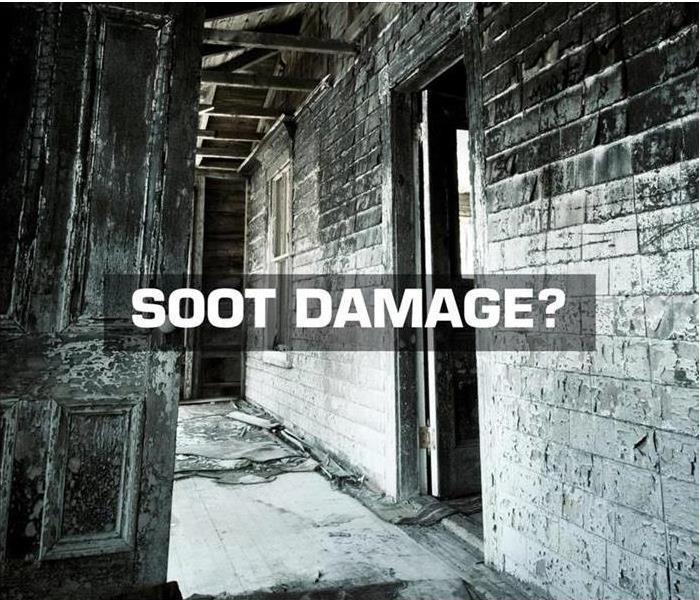Soot VS Smoke
1/16/2020 (Permalink)
SERVPRO of Big Rapids/ Fremont realizes that fire damage has many components, including smoke and soot damage. Keep reading to learn more about soot damage, smoke damage, and the difference between the two.
Smoke Vs Soot: What’s the difference?
Smoke occurs when there is incomplete combustion--meaning not enough oxygen to burn the fuel completely. In complete combustion, everything is burned, producing just water and carbon dioxide. When incomplete combustion occurs, not everything is burned. Smoke is a collection of these tiny unburned particles. Each particle is too small to see with your eyes, but when they come together, you see them as smoke.
(Source: https://www.sciencelearn.org.nz/resources/748-what-is-smoke )
Soot, is a fine black or brown powder that can be slightly sticky, and is a product of incomplete combustion. A major component of soot is black carbon. Soot is made up of a variety of chemicals, and its exact composition depends on what is being burned.
(Source: https://energyeducation.ca/encyclopedia/Soot )
Smoke and soot facts:
- Hot smoke migrates to cooler areas and upper levels of a structure.
- Smoke flows around plumbing systems, seeping through the holes used by pipes to go from floor to floor.
- The type of smoke may greatly affect the restoration process.
Different Types of Smoke
There are two different types of smoke–wet and dry. As a result, there are different types of soot residue after a fire. Before restoration begins, SERVPRO will test the soot to determine which type of smoke damage occurred. The cleaning procedures will then be based on the information identified during pretesting. Here is some additional information:
Wet Smoke – Plastic and Rubber
- Low heat, smoldering, pungent odor, sticky, smeary. Smoke webs are more difficult to clean.
Dry Smoke – Paper and Wood
- Fast burning, high temperatures, heat rises therefore smoke rises.
Protein Fire Residue – Produced by evaporation of material rather than from a fire
- Virtually invisible, discolors paints and varnishes, extreme pungent odor.
Our Fire Damage Restoration Services
Since each smoke and fire damage situation is a little different, each one requires a unique solution tailored for the specific conditions. We have the equipment, expertise, and experience to restore your fire and smoke damage. At SERVPRO, we care about you and your family, and want to make this situation as painless as possible. We will treat you like family, and respect your items as if they were our own. If you find yourself dealing with the aftermath of a fire, give SERVPRO a call. We’ll restore the damage and make it “Like it never even happened.”
About SERVPRO of Big Rapids/ Fremont
SERVPRO of Big Rapids/ Fremont specializes in the cleanup and restoration of residential and commercial property after fire damage. Our staff is highly trained in property damage restoration. From initial and ongoing training at SERVPRO’s corporate training facility to regular IICRC-industry certification, rest assured our staff is equipped with the knowledge to restore your property.
If you need help with cleaning up after Water, fire, or mold damage, call the Professionals at SERVPRO of NE Grand Rapids 24/7 616.647.4300






 24/7 Emergency Service
24/7 Emergency Service